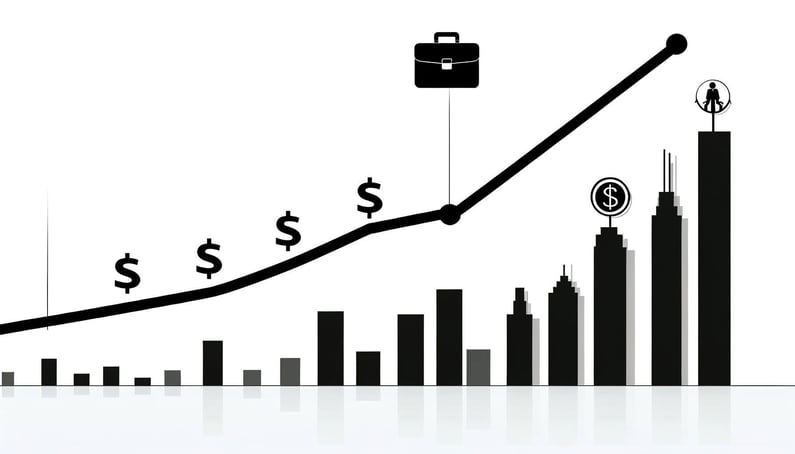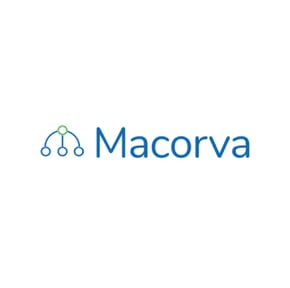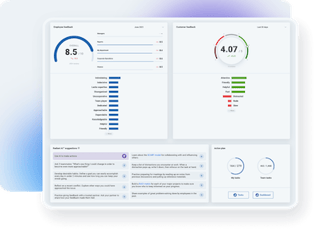
Evaluating ROI for Employee Wellness Programs: Updated Insights for 2025
Employees are becoming increasingly aware of their wellness and well-being. As a result, they expect employer-sponsored wellness programs to deliver meaningful benefits that meet their needs. For companies, these programs must not only provide a good return on investment (ROI) but also demonstrate value on investment (VOI). This shift highlights the growing recognition of both metrics as essential in developing optimal healthcare programs in the workplace.

Aligning Employee Wellness Programs with 2025 Trends
To understand why VOI and ROI for employee wellness programs are vital measures of robust initiatives, we must first review what a modern one looks like. In short, it's a constructively designed strategy to physically and mentally improve employees' health. In other words, when you discuss healthcare, it must include emotional and cognitive well-being.
According to a 2021 Fidelity survey, almost every employer respondent featured programs focused on smoking cessation, encouraging physical activity, and preventing obesity/weight issues. However, it goes significantly further with surveyed companies reflecting the following inclusion levels:
a. 92% added emotional/mental health components and metric tracking, helping their employees to consistently:- Manage stress better and adopt improved sleep regimens.
- Access pediatric mental health options for growing families when the need arises.
b. Between 48% and 74% accelerated support for work/life balance by focusing on:
- Leave benefits, parental leave, and time off when child adoption enters the employee’s domain.
- Subsidizing caregivers and childcare.
c. From 77% to 83% of employers regard financial peace of mind as a crucial wellness program feature, introducing innovative concepts such as:
- Support around emergency savings, budgeting processes, and debt management disciplines.
- Mortgage application guidance, structuring wills, and maximizing income investing.
ROI vs VOI: Why both metrics are essential measures for employee wellness programs
In 2022, The International Foundation of Employee Benefit Plans (IFEBP) issued a report reflecting workplace wellness trends, confirming that the shift to a holistic strategy is a reality. It shows that nearly 70% of the surveyed organizations have moved from a predominantly healthcare cost focus to a VOI-centric holistic approach, inserting employee morale, engagement, and job satisfaction as priority considerations.
Measuring ROI for employee wellness programs.
Employers have realized that traditional ROI measurements involve straightforward cost reductions. For example, a Harvard Revue (pre-2015) case study reflected a company that saved employees $3.27 in medical claims and cut absentee-related overheads by $2.73—$6 for every dollar invested in its wellness program. As a result, the metric registered as a 6:1 ROI.
The ROI ratio in our example (i.e., 6:1) is not a "carved-in-stone" yardstick. It is however a way to demonstrate value to stakeholders to understand their unique employee savings and cost reductions per dollar invested. The ROI may vary by industry and, depending on the program's intensity, by company in the same industry. Our example covered two cost items; you may want to add other overhead reductions into the equation. The bottom line is you want to see a significantly positive ROI ratio from any perspective and continuously work to improve it.
Short-term versus long-term employee wellness ROI
ROI metrics can attach to different time frames, from three-month intervals (short-term) to long-term outlooks up to five years. The results that emerge can vary significantly. For example, freshly launched wellness programs usually create workforce enthusiasm with visible signs of immediate employee morale, engagement, and participation up-liftment lasting for a few months. Absenteeism, sick leave absences, resignations, and employee complaints tick down quickly while output and revenues spike.
While monitoring the short-term benefits of your program is encouraging, the long-term ROI metrics integrated with VOI ratings should attract the most attention. Stakeholders want to see sustainable financial improvements for the company and staff as churn costs dissipate, employee productivity escalates, chronic health issues significantly reduce, and VOI benefits kick in.
Modern software solutions show no time-centric restrictions around reading the results from your wellness program evaluation initiatives. These innovative tools provide everything in an easy-to-interpret structured format every manager can understand.

Move beyond raw numbers and into actionable insights.
Measuring VOI
When one looks at wellness through VOI-tinted lenses, traditional ROI insights no longer stand in isolation. Why? VOI metrics provide new perspectives with a multidimensional backdrop that aligns with 2025 wellness trends.. They include innovative program drivers that create encouraging mental health metrics and less stress.
How crucial is mental stability as a wellness program focus today and in the future?
VOI doesn’t exclude ROI metrics from its vision; it takes the conversation to new depths for good reasons. The changing workplace landscape has propelled mental health support as a priority focus, motivating a report in October 2022 by the US Surgeon General’s Office - its first-ever framework for workplace mental health and well-being. The study revealed underlying dynamics confirmed by an expansive American Psychological Association survey in 2023, highlighting that:
- Between 92% and 95% of workers believe:
- Employer emotional and psychological support is critical to their long-term tenure.
- Stress-release ties in closely with stakeholders respecting their roles and contributions.
- Happiness in the workplace connects to the organization respecting the dividing line between work and leisure boundaries.
- With the above as benchmarks:
- 72% to 77% reported employer psychological support as acceptable to excellent, leaving between 15% and 19% unhappy with the same.
- 59% were content with their employer’s feedback on available mental health resources, with around 33% complaining about it.
Undoubtedly, these emotion-centric constructs contribute to boosting employee productivity, improving retention, attracting quality recruits, and cutting down disability claims. However, they also connect to other initiatives, significantly challenging wellness program cause-and-effect analysis.
When one realizes the VOI field includes qualitative outlier benefits such as preventing future diseases, avoiding foreseeable healthcare risks, and navigating past stress-related touchpoints, the complexity becomes even more puzzling. Before 2022, stakeholders were unaware of these intangibles or underestimated their importance (which is no longer the case according to the IFEBP report). Still, solutions are at your fingertips. Without question, this defines the future of measuring and evaluating health strategies, alongside technology in wellness programs on many fronts.
Enhancing Wellness Program ROI and VOI Through Data Analytics
Accumulating, analyzing, measuring, scoring qualitative feedback, and integrating VOI with ROI results are formidable challenges in ROI management for a team relying purely on human resources. Generating insights could take months, and even then significant inaccuracies are likely (especially as the conclusions generally arrive too late to be relevant).
Alternatively, AI-driven data analysis and report delivery consume a fraction of human time. Advanced people analytics and wellness platforms like Macorva EX are able to achieve this by scanning every cause-and-effect data point relevant to:
- Custom designing robust wellness strategies.
- Transforming massive volumes of diverse and unstructured information into rated VOI and ROI metrics.
Macorva’s data analytics approach addresses the most severe challenges to ROI management by spotting the standout touchpoints that drive or disrupt progress in the wellness arena, motivating or demotivating participant employees.
Employee wellness program VOI metrics
Once your wellness program operates effectively with a holistic approach, aiming at short- and long-term ROI goals, the metrics help you gauge performance. Consider the following:
We partially covered this under “Measuring ROI for employee wellness programs” above. It includes the following items in a comprehensive benefit analysis:
- Cost savings from absenteeism, sick leave, and healthcare administration overhead reductions.
- Employee health claim savings after reviewing.
- Health benefit claims.
- Sick leave costs.
- ER visits.
- Biometric screening results.
- Diabetes incidence
- Personal health profiles.

How important is employee feedback?
Managers can use employee feedback for immediate performance and wellness improvements. Learn how
2. Data analytics metrics and ratings
Macorva’s AI-powered tools (and those of other professional software providers) integrate the items above plus the following quantitative and qualitative data sources:
A. Employee Participation MetricsCompanies investing thousands in wellness improvement should see their programs succeed quickly, but that's unlikely without member enthusiasm. Therefore, they must rate their employee engagement by systematically analyzing metrics around:
- Participant and non-participant feedback.
- Pre-launch workforce response (i.e., too few questions is a flashing alarm signal).
- Usage of gym facilities and counseling resources (versus expectations).
AI algorithms automatically calculate dynamic baselines to measure results as they arise, making it easy to identify defective touchpoints emerging from such things as:
- Inadequate communication and promotion of the wellness program.
- Program design flaws.
- A generally disengaged workforce.
After an effective wellness program launches, stakeholders should expect improvements in VOI SEM outcomes. Encouraging or discouraging signals emerge from various sources (including onboarding initiatives) that advanced AI tools can quickly and seamlessly scan across large volumes of data, such as:
- NPS, CSAT, and regular pulse surveys.
- Task completion rates, churn or retention rates, and overall work output.
- Feedback content derived from:
- Customers’ agent support reviews.
- Stay and exit interviews.
- Focus groups.
- Employee performance interviews.
- Onboarding conversations, surveys, and reports.
- Employee social media posts.
- Presenteeism probes (uncovering employees physically present at work but disconnected from their job descriptions) that typically include scanning non-private recorded conversations with supervisors and peers.

Wellness programs built from AI solutions like Macorva are designed for flexibility, adapting to the unique needs of different industries and companies. This adaptability is key to developing effective wellness strategies that enable employees to achieve a healthy work life balance by amplifying beneficial aspects and minimizing less effective ones.
Wellness program case studies and success stories
- TechCo's holistic wellness strategy covered all the bases, from every type of exercise class and cardio workout to mindfulness and stress reduction initiatives, with professional counseling services and meditation apps on tap. Their metric and software ratings of quantitative and qualitative data reflected a substantial reduction in employee absenteeism and improved employee retention. Also, employee feedback underlined appreciation of employer support and respect for individual values.
- PharmaCorp wanted to establish an organizational culture of health and wellness by introducing a company-wide health challenge. The idea was to encourage employee participation in healthy lifestyle options with a program that included friendly competitions, rewards, and recognition of achievements. The competition succeeded with clockwork precision by deploying tracking software and wellness apps. Eventually, the challenge merged with organized health and wellness fairs, access to health screenings, nutritional counseling, and fitness assessments.
The metrics didn't take long to reveal such fine details as participants’ body mass index improvements, decreased cholesterol levels, and increased energy outputs, creating an exceptional authenticity around the program. The employees agreed, voting it as a catalyst for renewed camaraderie and team spirit in a substantially enhanced work environment - FinServe's Financial Wellness Program - a smaller company with budgetary restraints on a fully-fledged wellness program - decided that it should prioritize financial stress release before moving on to physical health. So, the stakeholders introduced budgeting guidance, retirement planning, debt management educational workshops, and one-on-one consultations with financial advisors accessible to all employees. Why start here? The company believed that economic stress was employee stability's #1 challenge, creating undesirable churn, disengagement, presentism, and absenteeism impact on performance. The metrics and qualitative ratings quickly proved they were correct, with considerably reduced financial anxiety, improved job satisfaction, and increased productivity.

Conclusion to 2025 wellness trends and ROI evaluation
Investing in employee wellness is more than a trend; it's a strategic move that cultivates a motivated and loyal workforce. To achieve this, it's crucial to generate both quantitative and qualitative metrics regularly, drawing from all available data sources within the organization. Speed, accuracy, effective probing, and AI-driven interpretation of employee feedback across multiple verticals are essential for meaningful results. Timely and dynamic adjustments based on this feedback can significantly enhance the success of wellness programs.
Macorva offers comprehensive solutions that streamline the implementation of employee wellness programs. Our AI-powered analysis and data-driven recommendations ensure no gaps are left that could undermine your investment. By transforming employee feedback from surveys into tailored action strategies, stakeholders can better prioritize wellness initiatives. This approach boosts morale, retention, and job satisfaction by showing employees that their well-being is valued, driving a cycle of continuous improvement and growth.
Editors note: this blog was originally published in March 2021 and has been updated for accuracy and comprehensiveness.




